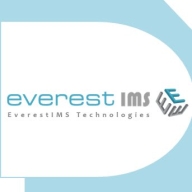

Infraon IMS and Elastic Observability compete in IT infrastructure management and application performance monitoring. Elastic Observability offers superior analytical capabilities, making it more appealing for users seeking comprehensive data insights, despite its higher cost.
Features: Infraon IMS provides customizable, real-time monitoring with centralized dashboards and integrated features. It allows for efficient network resource management with event visualization and drill-down capabilities. Elastic Observability offers extensive logging and performance monitoring using Kibana and various plugins. The product integrates well with existing systems and offers strong search functionality.
Room for Improvement: Infraon IMS could enhance its reporting features and integration with helpdesk systems, along with an improved GUI. Adding predictive analytics and AI-based features would strengthen its offering. Elastic Observability's APM needs better visualization and more comprehensive monitoring features. The manual configurations and non-standard metrics visualization need simplification, along with improved machine learning capabilities to ease the learning curve.
Ease of Deployment and Customer Service: Infraon IMS primarily offers on-premises deployment with responsive support, though faster response times would be beneficial. Elastic Observability supports hybrid and cloud environments, offering deployment flexibility. Technical support relies more on its extensive documentation than direct assistance.
Pricing and ROI: Infraon IMS offers competitive pricing with flexible licensing and proven time-saving benefits, resulting in positive ROI. Elastic Observability, though more expensive, provides valuable features at variable costs based on usage and volume. Despite its affordability compared to competitors like Dynatrace, pricing adjustments could better serve small businesses.
| Product | Market Share (%) |
|---|---|
| Elastic Observability | 2.9% |
| Infraon IMS | 0.4% |
| Other | 96.7% |


| Company Size | Count |
|---|---|
| Small Business | 8 |
| Midsize Enterprise | 4 |
| Large Enterprise | 16 |
| Company Size | Count |
|---|---|
| Small Business | 3 |
| Midsize Enterprise | 2 |
| Large Enterprise | 3 |
Elastic Observability offers a comprehensive suite for log analytics, application performance monitoring, and machine learning. It integrates seamlessly with platforms like Teams and Slack, enhancing data visualization and scalability for real-time insights.
Elastic Observability is designed to support production environments with features like logging, data collection, and infrastructure tracking. Centralized logging and powerful search functionalities make incident response and performance tracking efficient. Elastic APM and Kibana facilitate detailed data visualization, promoting rapid troubleshooting and effective system performance analysis. Integrated services and extensive connectivity options enhance its role in business and technical decision-making by providing actionable data insights.
What are the most important features of Elastic Observability?Elastic Observability is employed across industries for critical operations, such as in finance for transaction monitoring, in healthcare for secure data management, and in technology for optimizing application performance. Its data-driven approach aids efficient event tracing, supporting diverse industry requirements.
Infraon IMS offers network monitoring with real-time dashboards, customizable GUIs, and integrated tools, supporting device management and workflow automation efficiently.
Infraon IMS delivers stable performance with features tailored for easy customization and detailed network management. Users benefit from real-time monitoring through role-based dashboards and integrated ticketing tools. However, improvements in reporting, GUI usability, and AI integration are needed. Challenges include monitoring non-IPBS devices and improving connectivity visibility. Users require seamless Infraon Desk integration, ease of device addition, and enhanced topology views.
What are the key features of Infraon IMS?In industries like IT infrastructure and data center management, Infraon IMS is utilized for network monitoring and managing key components such as leased lines and firewalls. Its capabilities aid diverse geographical locations in overseeing data centers, offering centralized monitoring and access to critical infrastructure.
We monitor all IT Infrastructure Monitoring reviews to prevent fraudulent reviews and keep review quality high. We do not post reviews by company employees or direct competitors. We validate each review for authenticity via cross-reference with LinkedIn, and personal follow-up with the reviewer when necessary.